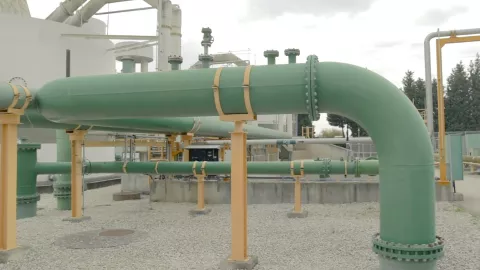From fake news to simple fears, there are several myths around hydrogen (H2), as there was in the past about energies such as natural gas or electricity used in electric automobiles. If you hear about green H2 and start thinking about unnecessary costs and nuclear bombs or burning zepelins, this article demystifies these fears, with the help of António Vidigal and Sofia Ganilha, from EDP Inovação.


Myth 1: Hydrogen is unsafe
“Conventional hydrogen production and its use in some industrial sectors are already widely known and implemented processes”, explains Sofia Ganilha, manager of the BEHYOND project, which studies hydrogen production in offshore wind farms. The official mentions that there have been, for decades, “standards and norms defined to regulate health, safety and environment issues, there are other norms currently in the development phase that also try to contemplate the new technologies and uses”. Sofia further argues that “it is essential to invest in this worldwide standardization from production to the handling and use of hydrogen and there is a large lobby to act for this to happen”.
António Vidigal recalls that "not long ago, before the use of natural gas, the city gas we used in Lisbon contained 40% of hydrogen and this never caused any problems. Hydrogen, being lighter than air, disperses into a pipe in the event of an escape, which is an advantage".


Myth 2: Hydrogen makes you think of bombs and cataclysms
Perhaps it is the easiest myth to refute, since the association only exists in the name. Still, Sofia Ganilha explains: "The working principle of hydrogen pumps is similar to the reactions that occur in stars nuclei, particularly in the Sun. It is a nuclear fusion reaction in which two atoms (deuterium and tritium) merge into a larger atomic nucleus, followed by a nuclear fission reaction. This process is nothing like the electrolytic process that is used to produce hydrogen, in which water molecules are separated into hydrogen and oxygen atoms by application of electric current".
Even the Hinderburg accident in 1937, often remembered for the fact that the zeppelin floated due to hydrogen, is unrelated to gas itself. The most accepted explanation indicates that it was the flammable components on the paint that covered the zeppelin - not hydrogen, which dissipated in seconds - that caused the fire in the aircraft structure.


Myth 3: Hydrogen has too high costs
The price of green hydrogen has fallen in recent years and it is expected that the reduction will be even higher over the next decade, making it truly competitive against other energy solutions. António Vidigal reinforces, on the other hand, that the cost of H2 is not so much in the technology or in the infrastructures: "The main component of the cost of green hydrogen is the renewable energy from which it is produced via electrolysis, which corresponds to 70% of the total". "It is necessary to have good renewable resources, which Portugal does", and to make an "optimization of the solar and wind mix".
Sofia Ganilha also envisages a sharp drop in costs, "similar to renewable technologies such as photo-voltaic and wind". In essence, the advantages have already been found, so there is only one last technological and international cooperation push for hydrogen to be at the same level as traditional fuels. Sofia highlights the "automation of manufacturing lines, the optimization of design and technical requirements, and the scale economy, that will emerge as a result of the growth of the market" as parameters for price decline.


Myth 4: Hydrogen is not completely ecological
In fact, we can take on hydrogen with different colors, and you can read more here. In the production of gray hydrogen, which still dominates the international landscape, gases are released into the atmosphere. And in the case of blue hydrogen produced by the same steam reforming technique, these pollutant emissions are captured for subsequent storage, but there is a small percentage that escapes to the atmosphere in the process.
In green hydrogen, "we are talking about renewable resources such as wind and sun, which allow for hydrogen to be produced through water electrolysis", says António Vidigal. It argues that it is "indicated for rare cases of mobility" and provides examples such as "aviation, where green synthetic fuels may become dominant", and that ships, "through green ammonia (NH3) whose molecule has 3 hydrogen atoms, and that can be directly used as a fuel". All uses without any associated emissions.


Myth 5: Hydrogen does not offer that many possibilities
On the contrary, this is one of the biggest advantages of hydrogen, its versatility. H2 can be injected into natural gas pipelines, increasing its energy efficiency; it can be used in vehicles, light- or heavy-duty, where it is converted into energy through fuel cells, in addition to all its industrial applications. António Vidigal refers the high temperature furnaces, for example, where hydrogen can improve heating, but also the production of ammonia, used for fertilizers. Green hydrogen will also allow the production of synthetic fuels and even green steel.
In turn, Sofia Ganilha also reminds the flexibility that H2 can bring to the energy sector: "Hydrogen can store energy produced from renewable sources for long periods until it is necessary again." At that time, it is "converted back into electricity via fuel cells." And in recent years, more and more ways of storing hydrogen have been tested to reduce the scale of its use. Sofia Ganilha gives the example of a German team that created "an hydrogen-based energy paste" that can be used in small vehicles, such as scooters.



